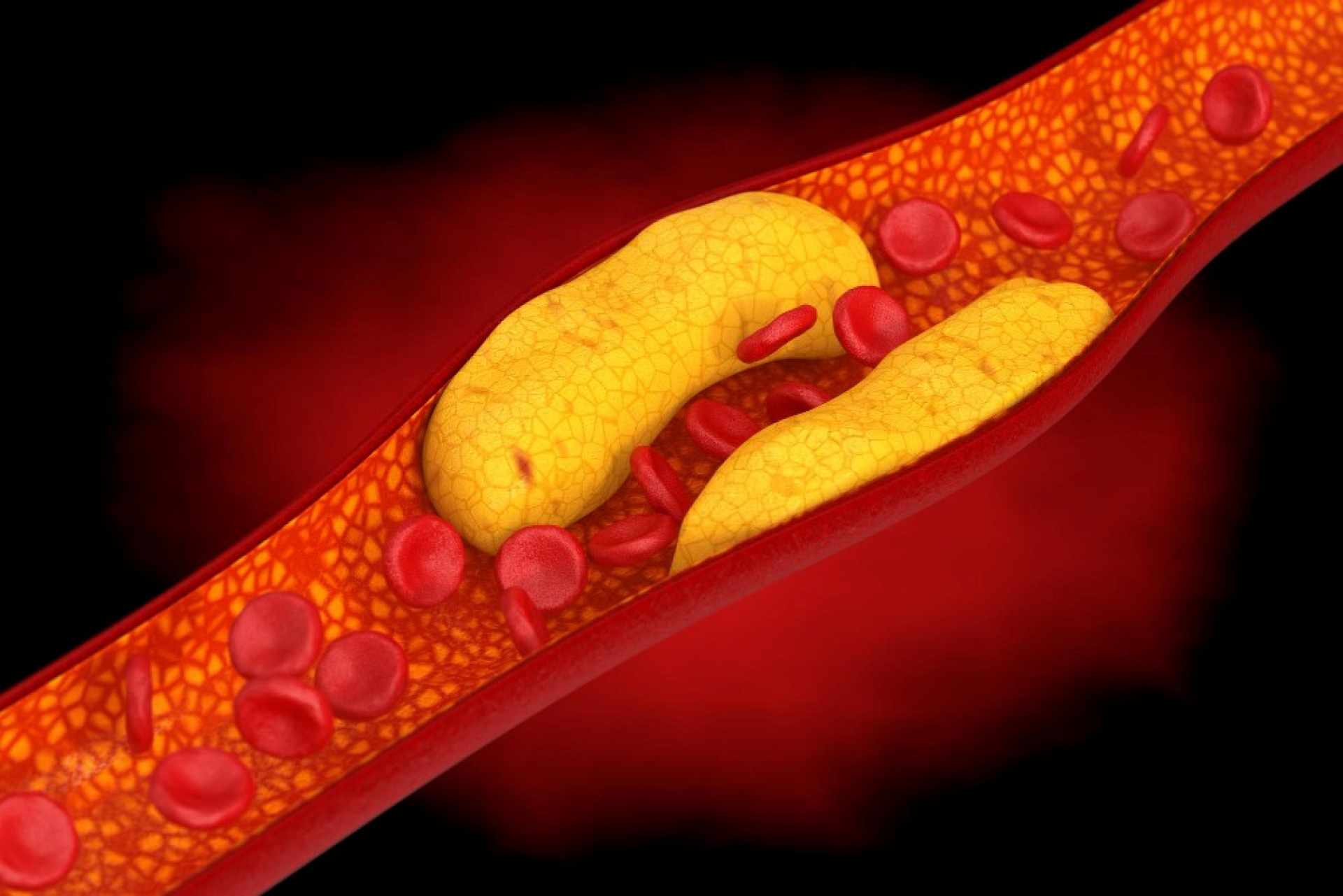Your arteries are the highways of your body, carrying oxygen-rich blood to vital organs. But when these arteries become narrowed or blocked due to plaque build-up, it can set off a dangerous chain of events, increasing your heart disease risk dramatically. This condition is called atherosclerosis, and it is more common, more silent, and more preventable than most people realize.
In this blog, we will break down what causes atherosclerosis risk, how your cholesterol levels affect arterial health, and how a simple lipid profile test can help identify your risk early. Plus, we will explore ways to prevent and reverse plaque build-up before it leads to heart attacks, strokes, or peripheral artery disease.
What Is Atherosclerosis?
Atherosclerosis is a progressive condition where fats, cholesterol, and other substances collect on the inner walls of arteries. This plaque build-up causes the arteries to harden and narrow, restricting blood flow.
Over time, plaques can rupture, triggering blood clots that further block the artery or travel to other parts of the body, leading to life-threatening events like heart attacks or strokes.
Key Features of Atherosclerosis:
- Chronic, slow-developing process
- Affects large and medium-sized arteries
- Can begin as early as childhood
- Often symptomless until severe narrowing occurs
The Link Between Cholesterol Levels and Atherosclerosis Risk
Cholesterol is a fatty substance essential for building cells and hormones. However, too much of the wrong kind can increase your atherosclerosis risk.
Types of Cholesterol:
- LDL (Low-Density Lipoprotein): Often labeled “bad cholesterol.” It contributes to plaque build-up in arteries.
- HDL (High-Density Lipoprotein): Called “good cholesterol” because it helps remove LDL from the bloodstream.
- Triglycerides: Another type of fat linked to heart disease risk when levels are high.
Maintaining balanced cholesterol levels is key to preventing atherosclerosis. This is where the lipid profile test becomes essential.
What Is a Lipid Profile Test?
A lipid profile is a blood test that measures the levels of fats in your blood, including:
- Total cholesterol
- LDL cholesterol
- HDL cholesterol
- Triglycerides
- VLDL (Very Low-Density Lipoprotein)
Why It is Important:
- Identifies elevated cholesterol levels before symptoms occur
- Assesses your atherosclerosis risk
- Helps monitor response to lifestyle or medication
- Guides treatment decisions for heart disease risk
It is recommended that adults get a lipid profile every 4–6 years, or more often if they have risk factors like obesity, diabetes, smoking, or family history of heart disease.
What Is Plaque Made Of?
Plaque build-up in arteries consists of:
- Fatty deposits (LDL cholesterol and triglycerides)
- Calcium
- Cellular waste
- Fibrin (a clotting material)
As plaques grow, they stiffen and narrow the arteries, making it harder for blood to circulate. Inflammation also plays a role in this process, especially in response to damage caused by oxidized LDL particles.
How Plaque Build-Up Increases Heart Disease Risk
When plaque build-up limits blood flow, your organs, especially the heart, get less oxygen and nutrients. If the plaque ruptures, it can cause:
- Heart Attack: When a clot blocks a coronary artery
- Stroke: When blockage occurs in arteries leading to the brain
- Peripheral Artery Disease: When narrowed arteries reduce circulation in the limbs
- Kidney Damage: Due to restricted blood flow to renal arteries
That is why managing cholesterol levels and understanding your atherosclerosis risk is vital, even if you feel healthy.
Who is at Risk for Atherosclerosis?
Several factors influence your atherosclerosis risk:
- High LDL cholesterol and triglycerides
- Low HDL cholesterol
- Hypertension (high blood pressure)
- Diabetes or insulin resistance
- Smoking and alcohol use
- Sedentary lifestyle
- Family history of early heart disease
- Poor diet high in trans fats, saturated fats, and sugars
- Chronic stress and inflammation
Even if you are young, plaque build-up can begin silently, especially if these risk factors are present.
Early Signs and Symptoms (Often Ignored)
Atherosclerosis is often asymptomatic until it becomes severe. However, subtle signs may include:
- Chest pain or pressure (angina)
- Leg cramps while walking (claudication)
- Fatigue or shortness of breath
- Coldness or numbness in extremities
- Erectile dysfunction in men
These symptoms warrant further testing, including a lipid profile, ECG, or imaging studies.
Dietary Tips to Lower Cholesterol and Reduce Atherosclerosis Risk
Your diet plays a massive role in both causing and reversing plaque build-up. Focus on foods that lower LDL, raise HDL, and support vascular health.
Foods That Help:
- Oats, barley, and other high-fiber whole grains
- Fatty fish like salmon and mackerel (rich in omega-3s)
- Fruits (especially berries, apples, citrus)
- Leafy greens like spinach, kale, and fenugreek
- Avocados, nuts, and seeds
- Olive oil and mustard oil
- Garlic and turmeric for anti-inflammatory effects
- Green tea and dark chocolate (in moderation)
Foods to Avoid:
- Fried foods, fast food, and bakery snacks
- Sugary drinks and desserts
- Red and processed meats
- Full-fat dairy
- Margarine and hydrogenated oils
Following a Mediterranean or DASH-style diet can significantly reduce cholesterol levels and slow plaque build-up.
Lifestyle Habits That Support Arterial Health
In addition to diet, daily habits have a powerful effect on your atherosclerosis risk.
- Exercise regularly: 30–45 minutes/day of walking, swimming, or yoga
- Quit smoking: Tobacco accelerates plaque formation
- Manage stress: Try mindfulness, deep breathing, or journaling
- Get enough sleep: 7–8 hours supports lipid metabolism
- Limit alcohol: Excess raises triglycerides
- Monitor blood pressure and sugar levels regularly
- Track your cholesterol levels with routine lipid profile tests
Even modest lifestyle changes can significantly lower your heart disease risk.
How to Interpret Your Lipid Profile Results
|
Test Component |
Desirable Range |
What It Means |
|
Total Cholesterol |
Less than 200 mg/dL |
Overall risk marker |
|
LDL ("bad") Cholesterol |
Less than 100 mg/dL |
Lower = Better for arteries |
|
HDL ("good") Cholesterol |
Above 50 mg/dL (women) / 40 mg/dL (men) |
Higher = Protective |
|
Triglycerides |
Less than 150 mg/dL |
Lower levels support reduced plaque formation |
|
VLDL |
2–30 mg/dL |
High values increase atherosclerosis risk |
If your numbers are outside the healthy range, talk to your doctor about next steps, diet, exercise, or medication. Don’t wait for symptoms to take action.
Medications That Help Reduce Plaque Build-Up
If lifestyle changes are not enough, doctors may prescribe medications:
- Statins: Lower LDL and stabilize existing plaque
- Ezetimibe: Reduces cholesterol absorption in intestines
- PCSK9 inhibitors: For people with genetic high cholesterol
- Fibrates: Lower triglycerides
- Aspirin (in some cases): Reduces clot risk in narrowed arteries
Even on medication, a healthy diet and regular lipid profile checks remain crucial to managing atherosclerosis risk.
How Often Should You Get a Lipid Profile?
- Every 4–6 years if healthy and under 40
- Annually if you have hypertension, diabetes, or are over 40
- Every 3–6 months if on cholesterol-lowering medications or at high heart disease risk
Always review your numbers in context, with family history, lifestyle, and other blood markers.
Take Control Before Plaque Takes Over
Atherosclerosis risk is real, but it is not inevitable. The earlier you detect abnormal cholesterol levels and start working on your health, the better your chances of preventing serious complications.
Use the lipid profile test as your starting point. It is a simple, affordable way to catch warning signs of plaque build-up before they turn into emergencies. Pair that with a heart-smart lifestyle, and you can dramatically reduce your heart disease risk, naturally and effectively.
Take Action Today
· Book your Lipid Profile test.
· Start a cholesterol log and food journal.
· Add fiber, greens, and omega-3s to your plate.
· Get moving, aim for 150 minutes/week.
· Talk to your doctor if your results raise concern.
Your arteries will thank you.


